Contents
The idea of creating a monochrome garden is not new. Recently, it has been gaining popularity, so monochrome gardens look very original.
The use of white in landscape design allows you to visually expand the space. Plants with white flowers draw attention against a background of bright green foliage, enliven the garden at night. Parts of the backyard intended for recreation can be decorated with perennials with white flowers, creating a “Moon Garden”. Such a romantic name was given to the cozy corners of the garden, in which only plants with white flowers are planted. Photo example of a white garden:
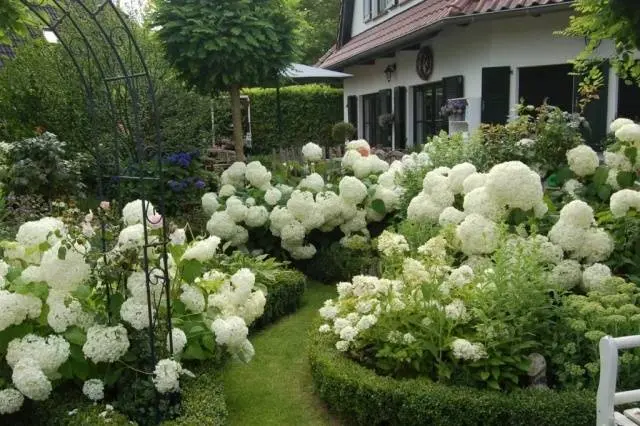
When creating your white garden, remember some nuances:
- It is not necessary to create the entire backyard in white. It will be enough to highlight the recreation area, the area near the reservoir with white flowers;
- Use plants with original foliage that is unusual in shape or color. Such flowers will give a semantic completeness to the composition and give originality to flowering perennials;
- Do not plant plants with white flowers against the background of light buildings and structures, so they will be lost;
- Consider the height of the flowers when planting;
- Use additional tools for decor: lanterns, sculptures, flowerpots, benches, swings. The White Garden is filled with romance, peace and is designed for relaxation;

- Use perennials to decorate your white garden. Universal perennials will save your strength and money, unlike annuals, which require material and physical costs annually.
By planting perennials with white flowers on your site, you will give it lightness, airiness and visually expand the space.
Perennial plants for creating a white garden
There are a great many flowering perennials with white flowers; ornamental plants with unusual leaves, in the color of which there is white, will help to complement their beauty. You can achieve the effect of continuous flowering by choosing plants for the white garden that bloom at different times.
Video for inspiration:
spring perennials
As soon as the snow melts, spring perennials begin to delight their owners with touching flowers. See photos of perennials blooming in spring:
Narcissus
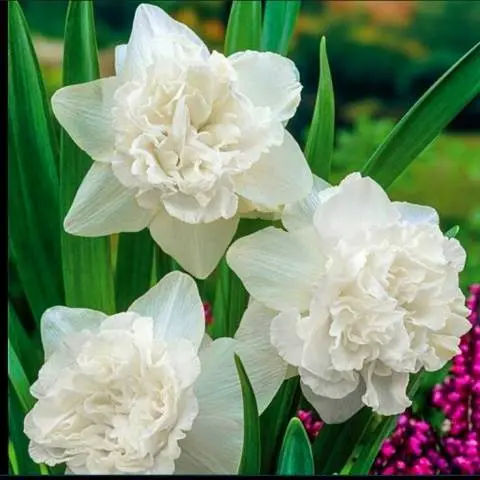
Narcissus is a popular perennial that blooms in April-May. A fragile delicate flower with a pleasant aroma loves light soils. It will grow well in sunny and semi-shady areas of your garden.
Tulip
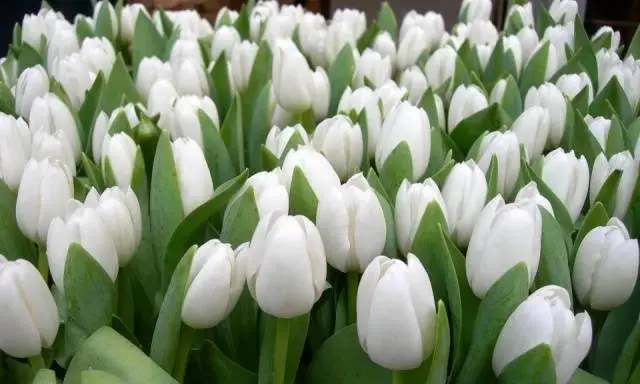
The tulip, like most spring perennials, has a short growing season. After flowering, the ground part dies. Among the huge number of varieties and varieties, you can pick up white tulips for your “moon garden”. The flower of a tulip comes in very different shapes and types: fringed, double, lily-colored, peony. According to the flowering time, tulips are divided into early (bloom from the end of March) and late (bloom in May until early June).
Snowdrops

The white flowers of the woodland are very unpretentious, appearing among the first after a long winter. Already in the second half of April, the plant blooms and its flowering lasts about two weeks. In central Our Country, Siberian blueberries are grown.
The flower is propagated by children. Prefers sandy loam and loam, but with a lot of humus. Can reproduce by self-seeding. For planting on your plot of woodland, choose sunny places to speed up the appearance of delicate white flowers in early spring.
Muscari

Muscari Alba have white flowers, do not like stagnant water, choose soils for planting perennials that pass water and air well. Muscari grow with equal success in sunny places and in the shade. Very unpretentious, grow quickly. White flowers look impressive when planted in mass. They do not require additional attention, they can grow in one place for 5 years.
Primrose
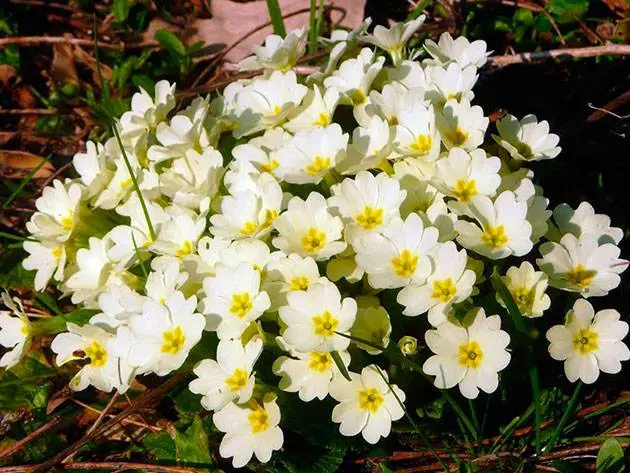
Primroses are very diverse, about 500 species of primroses are known. Primrose Arctic, blooming with white flowers, goes well in plantings with hosta, especially if the primrose is planted in large groups. The perennial reproduces by division. You can try to grow from seeds, but the process is laborious, because the seeds need stratification. In addition, the seeds are very small and difficult to germinate.
Lily of the valley
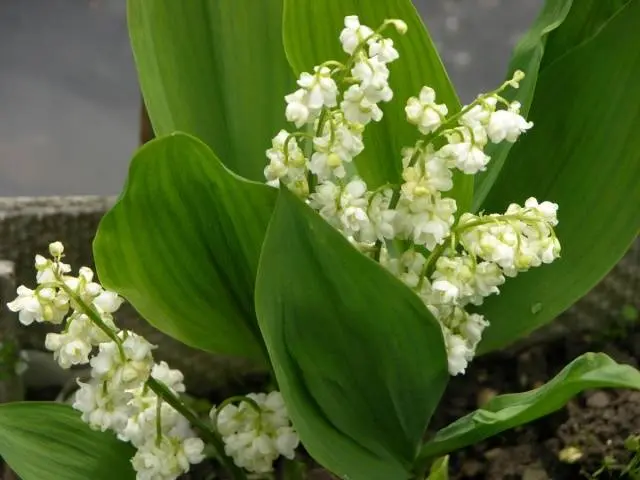
Decorative varieties of lily of the valley are distinguished by large white flowers, which can even be double, and unusual striped foliage, which adorns the flower beds after flowering. Lilies of the valley prefer shady areas of the garden. Perennials reproduce by root division. They grow well on loams with a large amount of humus or compost introduced. After 5 years, the perennial can be transplanted.
summer perennials
Spring perennials are being replaced by summer perennials, some of which begin to bloom as early as late spring if the weather is warm enough. Among summer perennials with white flowers, there are many that bloom profusely and for a long time. In the photo below, summer perennials:
Peonies
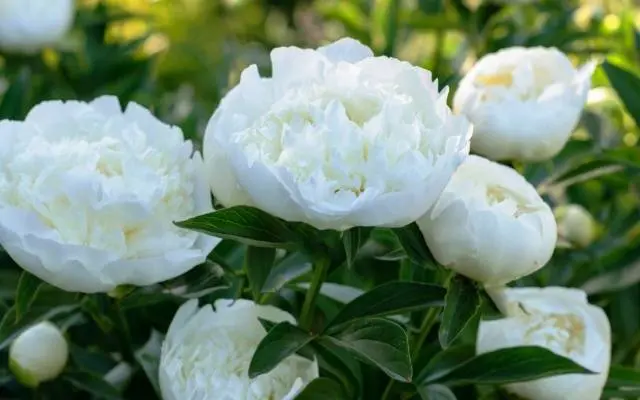
Early varieties of peonies bloom in early June. A perennial flower can grow in one place for more than a dozen years, if it is properly equipped with a landing site. Peonies do not like stagnant water, grow well on loam. If your soil is heavy, then when planting a perennial, add peat, sand and compost to the pit.
Peonies reproduce by dividing the bush. You can propagate a perennial using a renewal bud. To do this, in the spring, the bud is cut off along with part of the stem and root and planted in the prepared soil so that the bud is on the surface of the earth. White peony flowers look impressive and gentle with all the variety of varieties.
Irises

Active breeding work has led to the emergence of a huge number of new varieties among irises. Warty and dwarf irises attract attention with their unusual white color. Many have a unique aroma of flowers.
Irises begin to bloom in May, but, however, the dates are pushed back closer to the beginning of summer. Therefore, they can be fully attributed to perennials that bloom in summer. Plants are propagated by division, 2 weeks after flowering. Perennial soils prefer well-fertilized, neutral in acidity.
Volzhanka
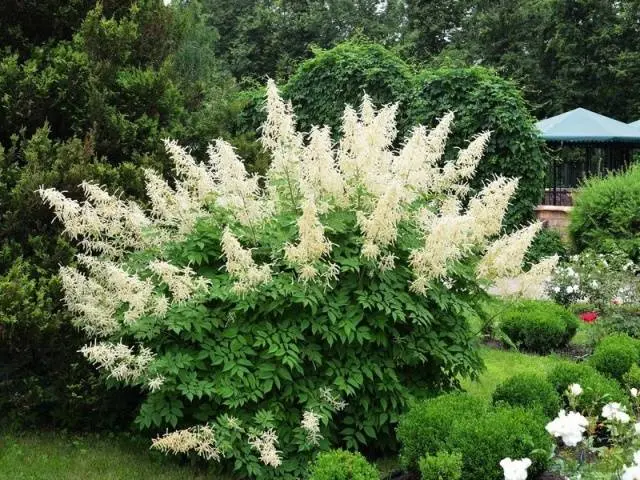
The flower prefers partial shade. Flowers in the form of a fountain rise above the leaves, appear in early June-July. The perennial is quite high, up to 2 m. For the garden, dwarf Volzhanka is preferable.
Delphinium

Variety “Crystal Fountain” is best suited for a white garden. White double flowers are located on a long peduncle.
The plant grows luxuriantly and blooms profusely in very sunny areas in the presence of fertile soil. Delphinium does not require a transplant for 5-6 years. You can organize an autumn additional flowering, for this you need to cut off all the flower stalks after the first flowering.
Nivianik
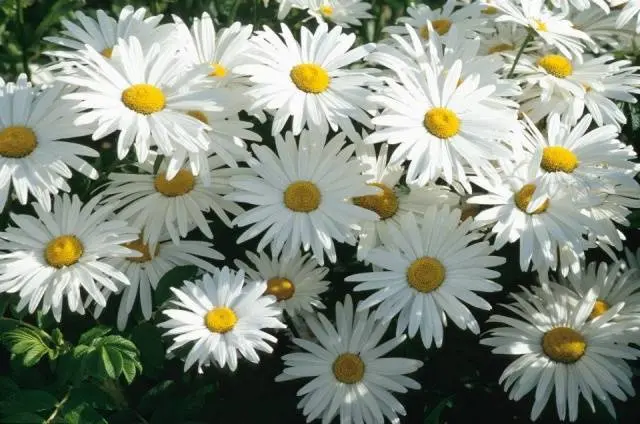
Sometimes simply called garden chamomile. Nivyanik blooms from the beginning of summer, for 2 months. The flower is very unpretentious in care, prefers fertile soil, without stagnant water. Among the varieties of leucanthemum “Alaska”, “Everest” resemble an ordinary chamomile. Varieties “Snow White”, “Snegurka”, “Aglaya” – terry hybrids, more like a chrysanthemum. Chamomile is propagated by dividing the rhizome.
autumn perennials
The baton of flowering from summer perennials is taken by plants that bloom in autumn. Some start blooming in summer. In autumn, flowering continues, and some perennials begin to bloom in conditions of shortened daylight hours. Photo examples of autumn perennials:
bush aster
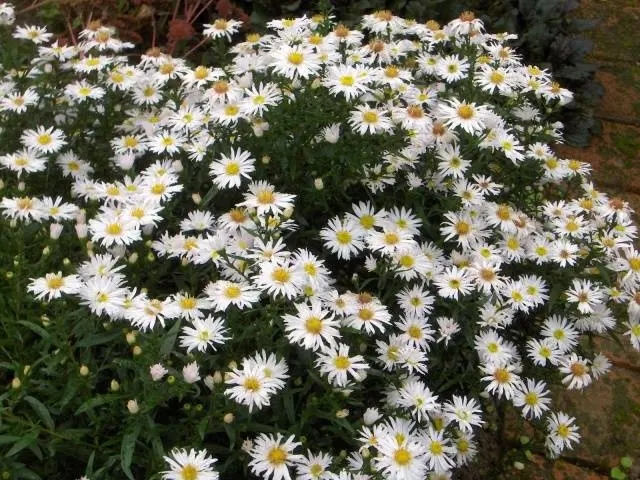
The perennial flower is very unpretentious. Propagated by dividing the bush in spring. Varieties “Niobea”, “Alba flor captivity” have white flowers. The bush aster blooms at the end of the summer season, when all the flowers have already faded.
It is very frost-resistant, can blossom and at the first frosts. It grows well on fertile soils, in the sunny part of the garden. They grow rapidly, giving many side shoots.
Hydrangea
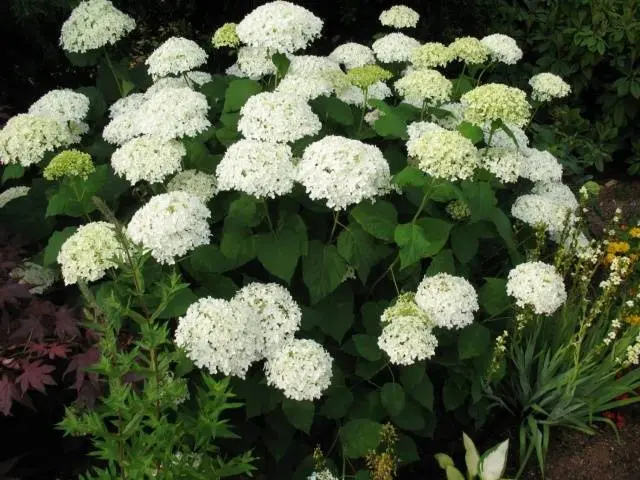
A perennial flowering plant, often referred to as shrubs, as it has a stiff stem. Hydrangea begins to bloom in summer. A long flowering period ends only with the advent of cold weather.
Hydrangea is propagated by cuttings, rooted layering or dividing the bush. The most remarkable thing about the hydrangea is its small flowers, which are collected in spherical inflorescences.
Astilba

A perennial plant that grows much better in partial shade, however, varieties that bloom in autumn grow well in sunny areas. In order for astilba to please with lush flowering, it must be watered and fed.
Astilbe is propagated in the usual way: by dividing the bush. The flower grows in one place for more than 5 years. He will then need a transplant.
Plants with unusual leaves
Ornamental greenery retains its properties throughout the growing season. When creating a white garden, non-flowering plants are also planted so that they are a backdrop for flowering plants and in order to emphasize the beauty of white flowers. The photo shows examples of such plants:
Hosta
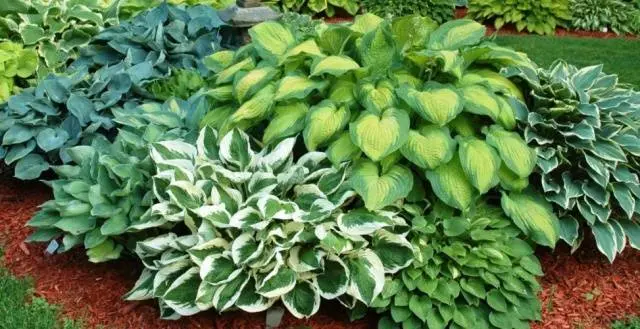
In the host, the main thing is the leaves. The plant is very versatile. For a white garden, a variety is most suitable, the green leaves of which have a white border. Hosta is undemanding to care, grows on well-fertilized and moistened soils, feels great near water bodies.
Propagated by dividing the bush. Hostas can be grown from seed. The plant perfectly solos in a flower bed, it can be used for borders, for flower beds, along with other annuals.
Brunner large-leaved
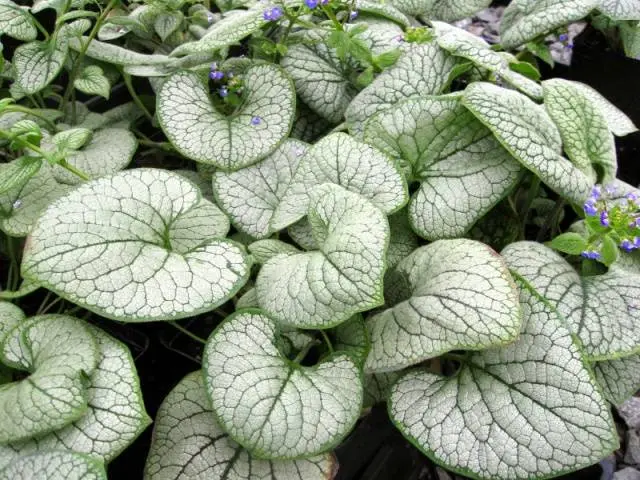
Variety “Jack Frost” has an unusual color of the leaves. The leaves are large, heart-shaped, as if covered with frost.
The plant grows well in clayey moist soils. Does not require any maintenance. Propagated by dividing the bush, seeds.
Conclusion
Create a white garden on your site, or at least a part of it. The white corner of the garden will be filled with romance, space, light. White color gives solemnity. Flower beds, made in white, attract attention. The paths along which white perennials are planted serve as a kind of lighting, they are clearly visible in the dark. Delighted and surprised looks of neighbors and friends are guaranteed.










